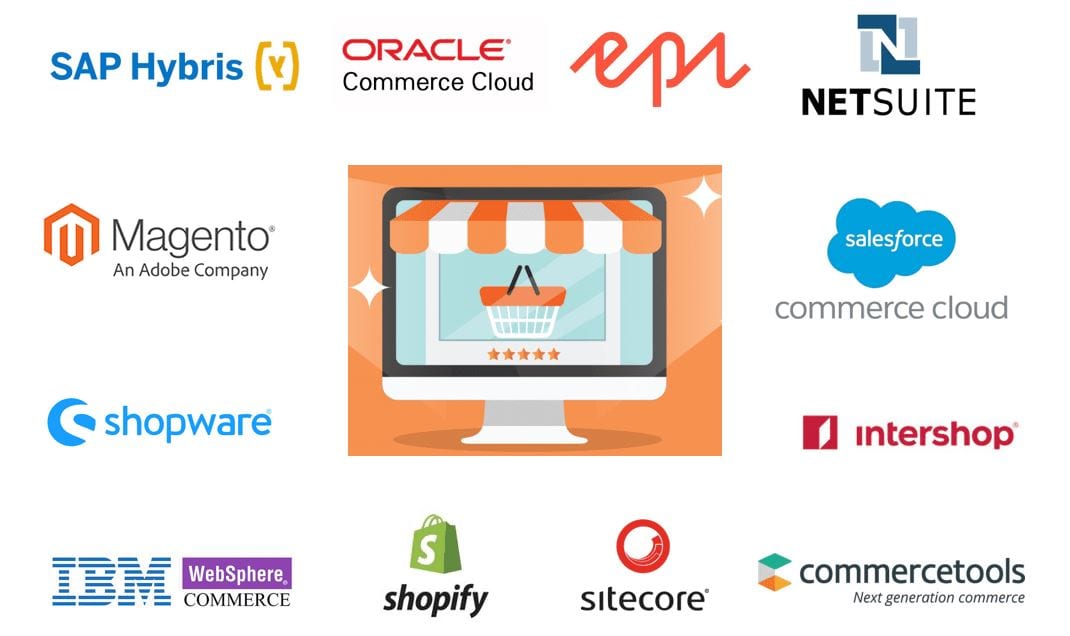When migrating to a new Ecommerce platform ga je niet over één nacht ijs. Want daar is de stap te ingrijpend voor. Maar laat je niet afschrikken. Immers: je hebt ongetwijfeld goede redenen om na te denken over de voor- en nadelen van replatforming. Of je bestaande oplossing is onvoldoende met je business meegegroeid, of de kosten rijzen de pan uit. Het zijn belangrijke aspecten bij je volgende keus. Ongetwijfeld heb je al heel wat replatforming-tips bestudeerd. Hier is de meest relevante: vergelijk de bestaande Ecommerce platforms, make a shortlist and compare costs and performance per platform.
As said: replatforming is an important step. It feels like you are going to live in a new house. Everyone has to find their way and get used to it. Existing routines change, systems need to be interconnected. But that is no reason for delay. Because the market and your customers don't wait. If your current Ecommerce platform no longer meets your requirements, chances are that your business will not meet the requirements of the market and consumer. And with that, the chance that you will miss out on customers and turnover is considerable. Because the competition is fierce and consumers are ruthless if you don't give them the experience they expect.
Replatforming Tips
So, the first of our replatforming tips is, don't delay your decision any longer. Formulate a clear package of requirements and make a step-by-step plan with a clear timeline. Involve as many people in your organization as possible, who can add value to the replatforming project from their role. The sooner the better. Because support and knowing what is happening is essential. Allow employees to watch, count and participate in the decision-making phase during the comparison phase.
Aangezien je je oriënteert op nieuwe Ecommerce software heb je de nodige ervaring in Ecommerce. Je weet dus goed in kaart te brengen welke eigenschappen en functies succesbepalend zijn voor je huidige business en vooral wat op dit moment hiaten en struikelblokken zijn om door te groeien. En om de concurrentie de baas te blijven. Daarmee heb je al een goed startpunt voor het vergelijken van het brede aanbod. Tip 2: maak een gedetailleerd en gespecificeerd programma van eisen. Dat is je leidraad bij het vergelijken van de overvloed aan oplossingen die de markt biedt. En je blauwdruk voor de uiteindelijke selectie.
Balance in costs and performance
Tijdens het doorzoeken van het aanbod zul je al snel ontdekken dat veel platforms nauwelijks voor elkaar onderdoen voor wat betreft de opties en functionaliteiten die ze bieden. Het kan zo ‘kaal’ of uitgebreid als je maar wilt. Maar: hoe geavanceerder een platform, hoe hoger de aanschafprijs of de licentiekosten. En ook de periodiek terugkerende beheer- en onderhoudskosten vallen vaak hoger uit. Daarmee kun je vooraf rekening houden. Maar laat het kostenaspect je besluitvormingsproces niet domineren. Zoek liever naar de ultieme balans in kosten en performance.
So are you with open source platforms soms het voordeligst uit. En voor veel niet al te gecompliceerde webshops kan dat een prima oplossing zijn. Open source Ecommerce software – van zowel de bekende als minder bekende aanbieders – maakte de afgelopen jaren een grote groei door omdat steeds meer kleine bedrijven zich op Ecommerce storten. Kijk bij het vergelijken van platforms wel kritisch naar extra kosten, voor uitbreidingen, bijvoorbeeld, of voor het aanpassen van de sfeer en stijl van je webshop. En probeer een berekening te maken van kosten die samenhangen met de inzet van je mensen of het inhuren van externen. En heel belangrijk, de componenten vanuit de “community” moeten ook onderhouden worden, ook als de ontwikkelaar er mee stopt…
Cheap, expensive or in between
The opposite of an open source solution is the on premisesolution. With this you buy custom work, which is often a guarantee of the possibility of distinctive character. In the offer you will encounter all renowned tech names, but also new players. Your software runs on your own servers or in your own “public cloud”, usually within a service contract. Take into account the additional costs for security and watertight backup procedures and for the IT expertise that you must either have in-house or be able to hire at any time.
Then there is the option in between open source and on premise in is: the SaaS-solution. Software as a Service (or software on demand) is based on the rental / lease and service principle, in which you have to at least consider aspects such as maintenance, security, updates and system innovations. Since your software runs on a remote server, the chance of downtime is minimal, you can (sometimes) scale up and down at any time, and the risk of hacks or ransomeware is relatively small.
Take advantage of free replatforming tips
In conclusion, you can say that a open source platform does not require too large an investment, but that you can run up against limits for optimal performance. Moreover, some knowledge of and skill in IT is almost indispensable. On the other hand, there is the substantial investment in a on premise platform. If you choose this, IT knowledge is a must and you have to be absolutely sure of the stability of your servers and infrastructure. Do you choose a platform that runs according to the SaaSprincipe, enigszins vergelijkbaar met cloudsoftware, dan sta je meestal niet voor een grote investering in één keer. Je ziet snel wat je periodieke kosten zijn. Bovendien is daar de service bij inbegrepen.
Within these three options you will of course find major differences in functionalities. Think of SEO, bestel- en betaalfuncties, dataverzameling en –analyse, aanmaak van productinformatie, marketing automation, enzovoorts. Hiervoor geldt: leg ze naast je programma van eisen. En als we het over performance hebben, gaat het vooral ook over snelheid, beschikbaarheid en de User Experience en van je website. De consument heeft hoge verwachtingen. En een van die verwachtingen is dat je 24/7 toegankelijk bent en je website razendsnel laadt. Traagheid en downtime kosten klanten en omzet. Daarom nog een tip: kijk goed hoe de diverse platforms hierop scoren en lees zoveel mogelijk reviews.
Finally, to wrap up the replatforming tips, don't throw out your old shoes before you get new ones. In other words: let your existing platform run for a while. Make sure that the supplier of your choice takes this into account during the implementation. Keep control in your own hands. To compare is to know. Good luck! And if you need more replatforming tips for a successful migration, state our team waiting for you.














